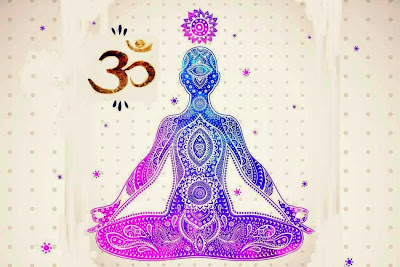Invocatory Prayer in Sanskrit
Om bhadram karnebhih srunuyama devah
bhadram pasye maksabhiryajatrah
sthirairangaistustuvam-
sastanubhirvyasema devahitam yadayu.
Svasti na Indro vrdhasravah svasti nah
Pusa visvavedah.
Svasti nastarksyo aristanemih svastino
Brahaspatirdadhatu.
Om santih santih santih.
Meaning of the Mantra
Om. May we hear the auspicious with our ears O Gods!
May we behold the auspicious with our eyes O worshipful ones.
May we live God-given span of life with firm limbs and bodies, singing your praises.
May the traditionally glorified Indra bless us.
May the all-knowing Sun bless us.
May Vayu, protector from harm, bless us.
May Brhaspati bless us.
Om Peace Peace Peace.
SIGNIFICANCE OF THE PRAYER
This peace invocation starts with Om as in all others. Om represents the supreme Self. It is the ultimate goal of human existence. The guru preceptor and the sisya disciple pray together for that experience.
O gods! O worshipful ones -- The Prayer is directed to Indra, Pusan, Vayu and Brhaspati. These were some of the gods that people worshipped in those days.
The prayer directs the eyes to see auspicious sights. In Upanisadic literature one sense organ is used to represent all of them. So the implication is let all the sense organs perceive only that which is auspicious.
The prayer asks for healthy limbs to function perfectly. To sing praises to Brahman indicates that the actions perpetrated by the limbs must be of divine nature. The reference to Vayu and Indra is a subtle indication to the pranas and the mind respectively. Vayu is the wind-God which represents the vital-air sheath, pranas. Indra represents the mind by virtue of his being the king of the sense organs. The Sun and Brhaspati refer to the gross and subtle intellects respectively. to the devotional seekers the prayer is merely directed to various gods. The intellectual aspirant finds that all the aspects of his personality -- namely the physical body, senses, pranas, mind and intellect -- are covered in the prayer. They are to be in perfect condition for use, in the spiritual pursuit, by both the master and student.
Stimuli from the external world reach you through the organs of perception. Colour and form enter through eyes, sound through ears, smell through nose, taste through tongue and touch through skin. Having entered therein the stimuli react with your mind and intellect. The type of reaction that will set in will depend upon the type of stimulus contacted and the nature of mind and intellect reacting with it. Consequent to the reaction your mind and intellect send out responses back into the world through your organs of action.
The prayer has covered the receipt of stimuli, the reaction within and the responses. All three have to be tuned in perfectly for spiritual Enlightenment,
May we live our allotted span of life -- a cry of all spiritual seekers. The Upanisad directs the students to live a hundred years. This indicates that a full term of life is necessary and is sought by aspirants for pursuing and reaching the goal of God-realisation.
-----------------------------------------------------------------------------------------
Source: Excerpts from the book on THE
SYMBOLISM OF HINDU GODS AND RITUALS by A.Parthasarathy.
------------------------------------------------------------------------------------------




















.jpg)





